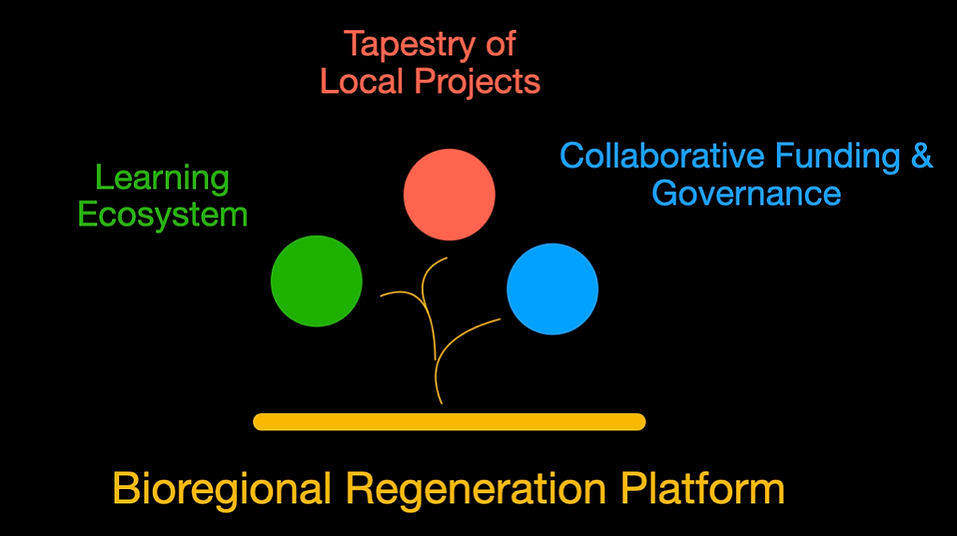
About
Regenerating an Entire Territory
Welcome to Regenerate Barichara
This website is the personal storytelling platform of joe Brewer to share the inspiring work that is unfolding across the community with many local leaders in Barichara, Colombia. Please read and share what you find here. It is meant to bring inspiration and healing to the world.


The regeneration of a bioregion is a process of integration and cooperation at holistic landscape scales. In Barichara, Colombia we are applying the model developed by the Design School for Regenerating Earth to manifest a pathway toward regenerative development at the scale of our regional climate system.
The three pillars of strategic action are to cultivate a learning ecosystem in the form of a bioregional learning center; to weave a tapestry of local projects that each carries forth at least one territorial regeneration process; and to mobilize resources in service to this work with a collaborative funding and governance ecosystem in the form of a territorial foundation.

In Barichara, we are actively working to establish our own bioregional learning center and have set up a territorial foundation called Barichara Regenerativa.
The learning center will be comprised of many regenerative education processes in our territory. It is where the ecosystem of bioregional learning is held as a tapestry of projects and regenerative processes.
The territorial foundation has a mission to establish the platform for bioregional regeneration as a collaborative funding and governance ecosystem.
In this way, we help weave regenerative projects into tapestries that are organized around significant landscape patterns like watersheds and ecological corridors -- while also supporting the thematic weaving of regenerative education into a learning ecosystem at the bioregional scale.

How We Define Our Territory
Barichara is located in the Northern Andes of Colombia where the mountain range divides into three major ridge lines.
Our climate is strongly influenced by the movements of air into the continent from the Pacific Ocean. We are in the rain shadow of the western range of mountains known as the Serranía de Los Yariguíes.
The combination of wet and dry seasons combined with migratory bird patterns connected with the cloud forest to our west is what gives our territory its unique "High Andean Tropical Dry Forest" that is like no other ecosystem on Earth.

Image credits Google Earth

We define the scale of regeneration for our territory in the context of major geologic and climatic features.
There is a robust pattern of air circulation to the east of the Yariguíes mountains as they circulate within a local cluster of canyons -- contained by the higher central and eastern ranges of the Northern Andes.
The entire region is in the process of becoming a desert due to decades of widespread deforestation.
This is clearly visible when we view the severe degradation of the landscapes around Barichara itself.
This image shows the plateau with the town located in the upper left. Decades of deforestation for monoculture farming practices have denuded the entire region.
We seek to connect ecological corridors and restore watersheds at this territorial scale. In order to reverse the process of desertification, it will be necessary to re-imagine the local economy that is a mixture of agriculture and tourism.
Our territory is well defined in geologic, climatic, and ecological terms. An additional layer is cultural -- the ancestral lands of the Guane People, a local identity as campesino life, and the emergence of tourism in the last three decades.

About Barichara, Colombia
Nestled in the mountains of Colombia, Barichara is registered as a national monument for its beautiful vistas and ancestral tranquility. It is a small town in the heart of indigenous Guane territory that is rich in local culture and home to the only “High Andes” tropical dry forest on Earth. More than 70% of all species found in this region only exist there.

